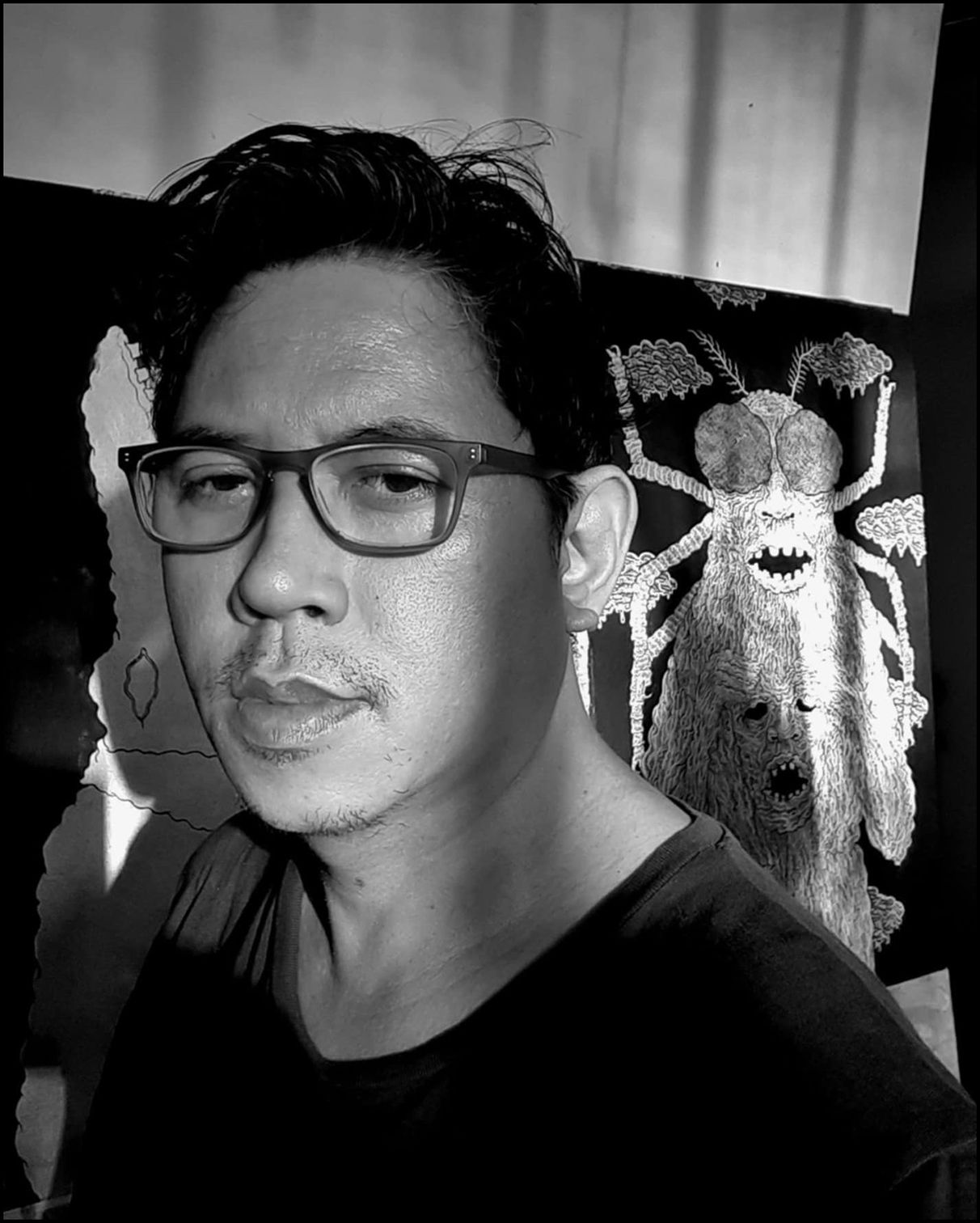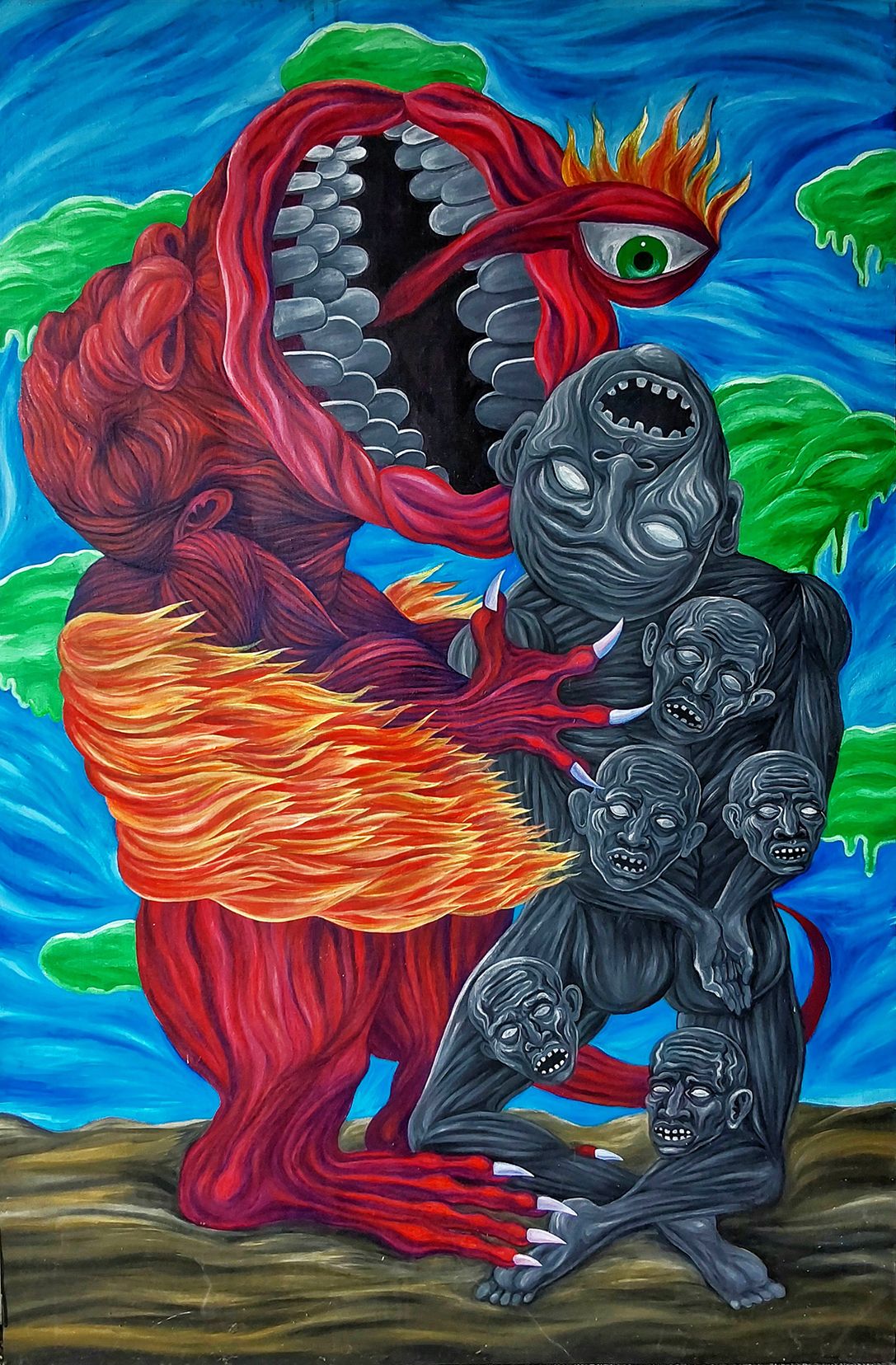Confronting contemporary ills
Paul Eric Roca's 'Creatures of Apathy' confronts contemporary discontent
By S.C. Fojas
At A Glance
- 'Being confronted with it and not having the power to fight and correct it, you become paralyzed by your own circumstances, whether you are the victim or a bystander who witnesses it.'

Paul Eric Roca’s unsettling yet compelling exhibit, “Creatures of Apathy,” recently concluded at Altro Mondo Creative Space, left a lasting impression on its viewers. The show, which ran from Jan. 25 to Feb. 22, explored the fragmentation and discontent that pervaded contemporary society.

Roca’s signature style, characterized by haunting imagery and a striking use of color, drew viewers into a world where the lines between reality and nightmare blurred.

“It was the general feeling of uninterestedness, being sanitized with the banality and prevalence of evil, chaos, and injustice,” Roca explains. “Being confronted with it and not having the power to fight and correct it, you become paralyzed by your own circumstances, whether you are the victim or a bystander who witnesses it.”
The artist’s choice of medium, acrylic on canvas, was deliberate, aiming for a “poster-like” accessibility reminiscent of movie cinema billboards and circus tarpaulin posters.

“I was greatly influenced by the Mexican muralists, also by circus tarpaulin posters, freak show images that advertise the bizarre and fantastic,” Roca reveals.
The vibrant, almost garish colors belied the dark themes Roca tackled. “I depicted injustices, corruption, social inequalities. I preferred to show them as they are and let the viewers form their own opinions,” he says. His works served as a mirror to society, reflecting back its flaws and contradictions.
Roca’s creative process was fluid and intuitive. “I generally would do studies, sketches oftentimes images that don’t really connect, I would let the images control and guide me on what the final outcome would be,” he explains. “The artwork didn’t need to adhere to the studies.”
When asked which artworks held the most significance, Roca emphasized the subjective nature of interpretation. “All of the artworks, in a way, had significance in different degrees. Usually, I would ask the viewers which artworks they preferred, and true enough, they picked the artwork that resonated with them the most, and they were not the same ones.”

Roca acknowledges the powerful role art could play in social change. “Historically, art has been a major force in influencing and raising awareness,” he says, citing examples like Picasso’s Guernica and Goya’s Third of May. “Even the Surrealists were born out of the irrational and unthinkable horrors of the first and second world wars. Editorial cartoons are a prime example of this.”
His hope was that his images would evoke a response. “I hope that my images would elicit emotions and questions, whether they were good or bad. I hope viewers got something out of these images and formed their own conclusions.”
Roca credited several artists and mentors for shaping his journey through art, including Tence Ruiz, Bob Feleo, Roberto Chabet, and Bobi Valenzuela.
“Tence Ruiz influenced and encouraged me to paint from being an editorial cartoonist,” he recounts. “Bob Feleo was my professor at UP, who helped me discover my visual imagery and visual language. Roberto Chabet, another professor from UP, opened my mind on what art could be. Finally, Bobi Valenzuela, a curator and writer, mentored me and patiently guided me on who I was as an artist.”
For aspiring artists, Roca offers this advice, “Be genuine to your own experiences. Have your own narrative. Your own experiences are unique.”
Altro Mondo Creative Space is at 1159 Chino Roces Avenue, San Antonio Village, Makati, Philippines